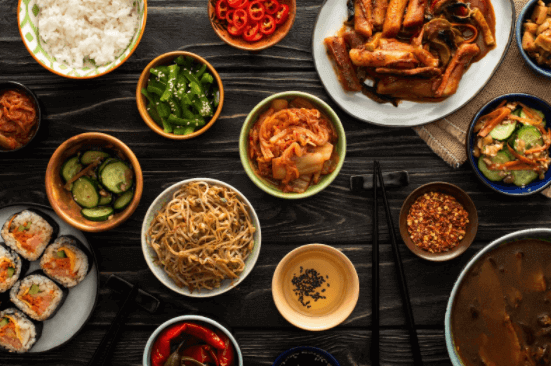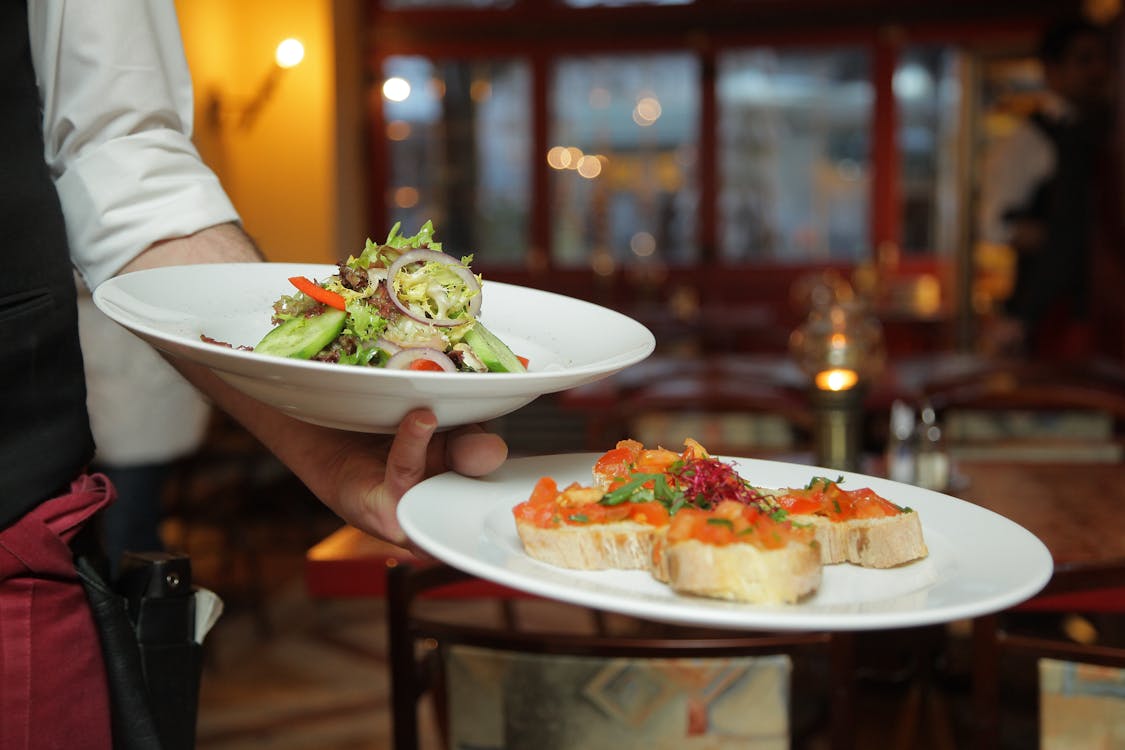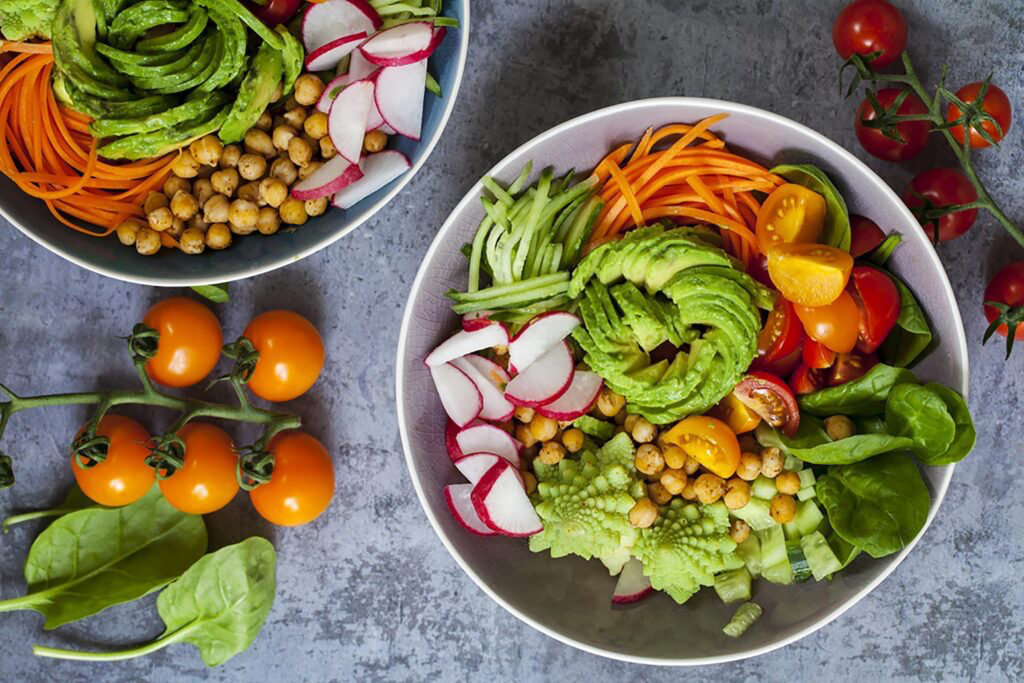How to Cook Salmon in Convection Oven
Imagine serving up succulent, flaky fillets of perfectly cooked salmon with a crispy skin that adds an irresistible texture and flavor. The magic lies within the convection oven – its efficient hot air circulation ensures even cooking and caramelization, resulting in restaurant-quality results in your kitchen. In this article, we’ll take you through step-by-step instructions on how to cook salmon in a convection oven, providing tips and tricks along the way to help you achieve culinary perfection every time. Get ready to go on a delicious adventure as we unlock the secrets of creating delectable convection oven-cooked salmon that will leave everyone asking for seconds!
Benefits of cooking salmon in a convection oven
Cooking salmon in a convection oven offers a multitude of benefits that elevate the dining experience. The even heat distribution in a convection oven makes sure that the salmon is cooked through evenly, resulting in consistently tender and moist fillets. This method also helps retain the fish’s texture and natural flavor while minimizing the risk of overcooking, making it an ideal choice for those seeking a perfectly cooked salmon dish. It’s not only great for cooking salmon but also for a variety of other recipes.
Using a convection oven to cook salmon can significantly cut down on cooking time compared to traditional methods. The hot air circulation within the oven accelerates the cooking process, allowing you to enjoy deliciously flaky and flavorful salmon in less time. Additionally, this method requires minimal supervision, giving you more freedom to focus on other aspects of meal preparation or simply relax while your delectable salmon cooks to perfection. Ultimately, cooking salmon in a convection oven not only saves time but also delivers exceptional results that are sure to impress your guests and elevate your culinary repertoire.
Preparing the salmon for cooking: How to Cook Salmon in Convection Oven?
In terms of preparing salmon for cooking in a convection oven, there are a few essential steps to ensure a delicious and flavorful result.
1. Choose the right salmon: When preparing salmon for cooking, it’s important to start with high-quality fish. Look for wild-caught salmon for the best flavor and texture.
2. Season the salmon: It’s important to season the salmon properly before cooking. Combine olive oil, lemon juice, finely chopped garlic, and a selection of fragrant herbs such as dill or parsley to create a straightforward and delicious seasoning. This mixture can be rubbed onto both sides of the salmon fillets to impart rich flavors and protect against drying out during the cooking process.
3. Preheat the oven: Preheat your convection oven to the recommended temperature for cooking salmon. This will make sure that the fish cooks evenly and to the perfect level of doneness.
4. Prepare the baking dish: Use parchment paper or aluminum foil to line a baking dish so the salmon won’t stick and cleanup will be easier.
5. Place the salmon in the oven: Once the oven is preheated, place the seasoned salmon in the prepared baking dish and place it in the oven.
6. Cook to perfection: Depending on the thickness of the salmon, it should take about 12-15 minutes to cook in a convection oven. Keep an eye on it to ensure it doesn’t overcook.
7. Serve and enjoy: After the salmon is perfectly cooked, take it out of the oven and give it a few minutes to rest before serving. Then, enjoy your delicious, perfectly cooked salmon!
How to Select the Ideal Fresh Salmon Cut: The Complete Guide
When cooking salmon in a convection oven, the cut you choose makes all the difference. There are several cuts of salmon available, and each one has its own unique flavor and texture. The most popular cuts include fillet, steak, and whole fish. The fillet is boneless and offers a delicate texture, making it ideal for quick cooking methods like broiling or pan-searing. On the other hand, salmon steaks are cross-section slices that contain bones and offer a meatier texture compared to the filet. This cut is perfect for those who prefer a heartier bite and want to experience more intense flavors. Additionally, choosing wild-caught salmon over farm-raised can significantly affect taste due to its natural diet and environment.
For those who prefer to cook a whole fish, it’s essential to consider the extra time required for preparation and cooking. This cut offers the added benefit of versatility as it can be stuffed with herbs or citrus fruits to infuse additional flavors. When selecting the right cut of salmon for your convection oven recipe, keep in mind that each option brings a distinct taste and culinary experience to the table. Experimenting with different cuts allows you to explore various textures and flavors while finding which best suits your preferences!
Elevate Your Salmon Dishes with These Mouthwatering Seasoning and Flavoring Options!
There’s a world of possibilities to explore when it comes to seasoning and flavoring salmon. A classic and simple approach is to season the salmon with a little olive oil, pepper, and salt. This allows the fish’s natural flavors to shine through while enhancing them with just the right amount of seasoning. If you desire a burst of invigorating and zesty flavors, think about adding a generous amount of lemon juice and an abundance of aromatic herbs, such as dill or parsley, to the salmon before placing it in the convection oven. For those looking to explore more adventurous options, consider preparing a delightful salmon tataki, featuring thinly sliced salmon lightly seared and served with a tangy ponzu sauce.
If you’re feeling adventurous, try marinating your salmon in a blend of ginger, garlic, honey, and soy sauce for an irresistible blend of savory sweetness. Not only does this infuse the fish with rich umami flavors, but it also creates a caramelized glaze as it cooks in the convection oven. Another tempting option is to create a zesty crust by coating the salmon with whole-grain mustard mixed with minced shallots and brown sugar before letting it sizzle under the even heat of the convection oven. With these seasoning and flavoring options at your fingertips, cooking salmon in a convection oven can be an exciting culinary adventure that delights your taste buds every time.
Sizzle Your Way to Salmon Success with these Temperature Tips!
Cooking salmon in a convection oven requires precise temperature control for perfect flakiness and tenderness. One key tip is to preheat the convection oven to 375°F before placing the salmon inside. This ensures that the fish cooks evenly while retaining its moisture, resulting in a juicy, flavorful dish.
Another temperature tip for cooking salmon in a convection oven is to monitor the internal temperature of the fish using a meat thermometer. For perfectly cooked salmon, the internal temperature should be about 145°F. By regularly checking the temperature as it cooks, you can prevent overcooking and ensure that your salmon remains tender and delicious.
In addition, experimenting with different temperature settings can also lead to interesting results. For example, some chefs advocate starting at a higher temperature (around 425°F) for a short period to create a crispy exterior, then reducing the heat to finish cooking at a lower temperature. This method can produce an enticing contrast between the crunchy skin and the succulent flesh of the salmon.
Can You Tell When Your Salmon Is Perfectly Cooked? Try These Tips!
Certainly! Achieving the perfect level of doneness for your salmon, but with some useful tips and a keen eye, you can become an expert in no time. One way to tell if your salmon is perfectly cooked is by checking the color – it should turn from translucent to opaque and have a vibrant pink hue. Another useful indicator is the texture; perfectly cooked salmon should be flaky and easily separable with a fork. Additionally, paying attention to the cooking time can make a big difference – overcooking can result in dry and tough salmon, while undercooking may lead to unappealing rawness.
Using a meat thermometer is a great way to find the perfect doneness for your salmon. The internal temperature of perfectly cooked salmon should reach 145°F (63°C). This approach eliminates any uncertainty from the calculation and ensures that your fish reaches just the right level of tenderness and juiciness. Experimenting with various cooking methods, such as baking, grilling, or pan-searing, can also provide varying results in terms of flavor and texture. So go ahead and try these tips – soon enough, you’ll be able to confidently discern when your salmon is perfectly cooked every time!
Step Up Your Cooking Skills With These Must-Try Salmon Serving Tips!
Cooking salmon in a convection oven can produce mouthwatering results, but the key to serving it perfectly lies in the accompanying tips. Once your salmon is beautifully cooked, consider adding a fresh burst of flavor with a zesty citrus marinade or a tangy herb-infused vinaigrette. The addition of these homemade sauces not only enhances the taste but also elevates your dish to a whole new level.
Another serving tip to amp up the appeal of your convection oven-cooked salmon is to pair it with complementary sides. Consider adding some steamed asparagus drizzled with lemon butter or roasted vegetables seasoned with garlic and herbs. A delicious and visually appealing side dish not only balances the flavors but also adds texture and color, making for an irresistible plate.
To truly impress your guests, it’s imperative to pay attention to presentation. Garnish your plated salmon with fresh herbs or edible flowers for an elegant touch. Additionally, consider serving on stylish dinnerware that complements the colors of the salmon and its accompaniments, creating an inviting and visually stunning meal that will leave all who partake delighted.
How long to Cook Salmon in Convection Oven
Using a convection oven to prepare salmon is an excellent method to produce a delectable meal that is both healthy and flavorful. When determining how long to cook salmon, it’s essential to consider the thickness of the fillet. For thicker cuts, aim for around 15-20 minutes at 375°F, while thinner pieces may only need 10-15 minutes. The goal is for the salmon to reach an internal temperature of 145°F, so using a meat thermometer is always handy for precision.
Conclusion
In conclusion, cooking salmon in a convection oven can yield delicious and healthy results. By following the easy steps described in this article, you can elevate your home cooking game and impress your family and friends with a flavorful and moist salmon dish. Remember to preheat the oven, season the fish generously, and keep an eye on the cooking time to avoid overcooking. With a little practice, you’ll soon become a convection oven salmon expert, enjoying perfectly cooked fillets every time. So go ahead, give it a try, and savor the delightful flavors of perfectly cooked salmon from your own kitchen!
FAQ
- Is it necessary to flip the salmon over while it’s cooking in a convection oven?
There is no need to flip the salmon; the convection heat will cook both sides evenly.
- Can I cook salmon with other vegetables in the convection oven at the same time?
Yes, you can cook vegetables alongside the salmon in the convection oven. Just make sure to adjust the cooking time and temperature for the vegetables accordingly.
- Is cooking salmon in a convection oven healthier than other methods?
Cooking salmon in a convection oven allows for even cooking and retains the natural flavors of the fish without the need for excessive butter or oil, making it a healthier option compared to sautéing or frying. Plus, it’s a great way to get in those omega-3 fatty acids!
- Can I cook frozen salmon directly in a convection oven?
Yes, you can cook frozen salmon in a convection oven; just adjust the cooking time accordingly.





